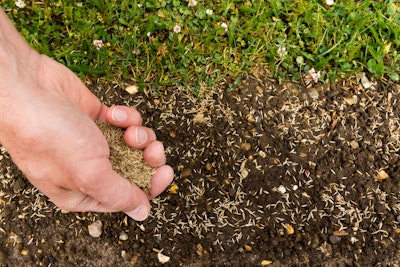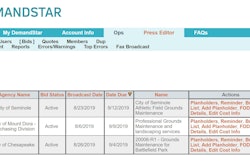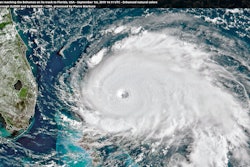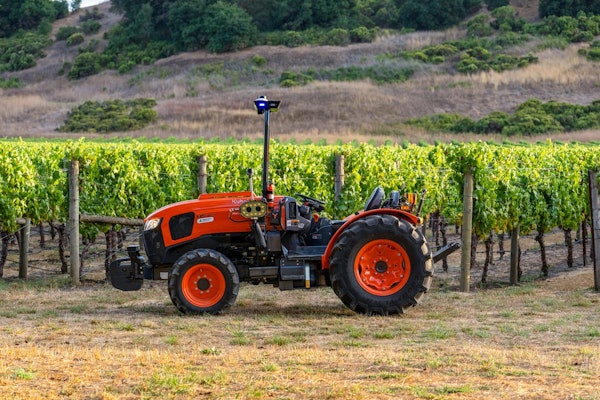
Find out what makes this time of year the best for seeding your customer’s lawn, as well as what to do if you see there are areas of the landscape that are in need of grass re-establishing.
What is overseeding and interseeding?
Overseeding, simply put, is planting grass seed directly into existing soil without tearing the soil or turf, which can help give your customer’s lawn thicker growth, better color and resistance to disease and drought.
As grasses age, the reproduction rate will slow down, which can cause the grass to begin to thin and allow room for weeds to grow. The process of overseeding will help your customer’s lawn compensate for the slowing down of the turf’s reproduction and create a thicker grass.
Interseeding, according to the Center for Urban Agriculture, is the practice of seeding the same grass species into itself to create a more dense look and recover any grass that’s been lost.
For cool-season grasses, early fall is ideal for growth because the soil is still warm from the summer. These seeds will germinate best when the soil reaches between 50 and 65 degrees Fahrenheit, which coincides with the daytime air temperatures reaching between 60 and 75 degrees Fahrenheit.
“The warm days and cool nights of early fall promote rapid turfgrass growth,” the Iowa State University Extension says online. “The growing grass also has less competition from weeds as few weed seeds germinate in fall.”
Overseeding a different turfgrass species into your customer’s lawn can help the area withstand heavy traffic, disease, insects, shady conditions and drought, and experts agree that the investment for this service will pay off for your customers, as it can help reduce the amount of fertilizer, pesticides and water the lawn will need. Not to mention the fact that renovated lawns can stay greener and can retain their look and health longer.
Grass will grow strongest and more quickly when the planting season aligns with the natural periods of the seeds’ active growth, and depending on your location, lawn grasses will vary in their growth cycles.
Cool-season grass seeds, such as Kentucky bluegrass and tall fescue, will germinate quickly in the late summer’s warmer soil and tend to grow best during the cooler temperatures of early fall. If possible, cool-season grasses should be planted at least 45 days before the estimated date of the first full frost.
“Successful overseeding involves growing healthy grass prior to overseeding, proper seed and seeding rate selection, overseeding timing and preparation, post-planting maintenance and spring transition,” the Center for Urban Agriculture says online. “It is particularly important to maintain proper soil fertility, to relieve soil compaction and to prevent excessive thatch development.”
According to the Michigan State University Extension, one advantage of overseeding your customer’s existing lawn is that it can help act as a mulch cover that can help retain the moisture in the soil.
As a general rule of thumb, the Kansas State Extension says that no chemical applications can be used during this process, and no herbicides should be applied until the new grass has been mowed a minimum of two times.
Once the area is properly seeded, it’s important to make sure the area stays moist throughout establishment, which may require watering multiple times a day.
“Timely irrigation is also very important,” the Kansas State Research and Extension says online. “Once the seed is sown, the upper surface of the soil should remain damp at all times. This may require daily, light applications. It all depends on the amount of sun and wind. Be prepared to water when needed as lack of water will slow establishment.”
Grass establishment
If your area of the country has seen its fair share of scorching summer heat, it’s possible that your customer’s lawn could be in need of re-establishing grass in some of the dead areas.
“If the turf is thin or there are small patches of dead grass about the size of baseballs, a fertilizer application and cool temperatures should help the existing turfgrass to recover and spread into the bare spots,” the Michigan State University Extension says online. “If the bare areas are the size of soccer balls or larger, or if the area only has sporadic green patches of turf, then interseeding is necessary to restore the area to turf.”
Proper site preparation is a must when working to re-establish grass in a dead area of the lawn, and depending on the size of the lawn, the preparation process could vary slightly.
For smaller areas, the Iowa State University Extension says to begin by raking the dead spots, as this will break up the soil’s surface. Sow the seed and then work the seed into the soil by lightly raking over the area a second time.
Larger areas, the Iowa State University Extension says, can be prepared by using a core aerator, which will remove the soil plugs when it’s run over the lawn.
The Center for Urban Agriculture says that core aeration can provide numerous benefits to the lawn, such as soil air exchange, improved water infiltration, relieving compaction and more. Additionally, it can also help improve the condition of the seed bed and the planting as a whole.
“To prepare the site, go over the lawn three or four times with the core aerator,” the Iowa State University Extension says online. “When finished, there should be 20 to 40 holes per square foot. Apply the seed with a drop seeder. Afterward, drag the area with a piece of chain link fence or drag mat to break up the soil cores and mix the seed into the soil.”
When the seeds have been sown, be sure to keep the top layer (about 1 inch) of soil frequently moist. With the right amount of moisture and good soil temperatures, the turfgrass seeds should begin to germinate within two to three weeks, according to the Iowa State University Extension.










